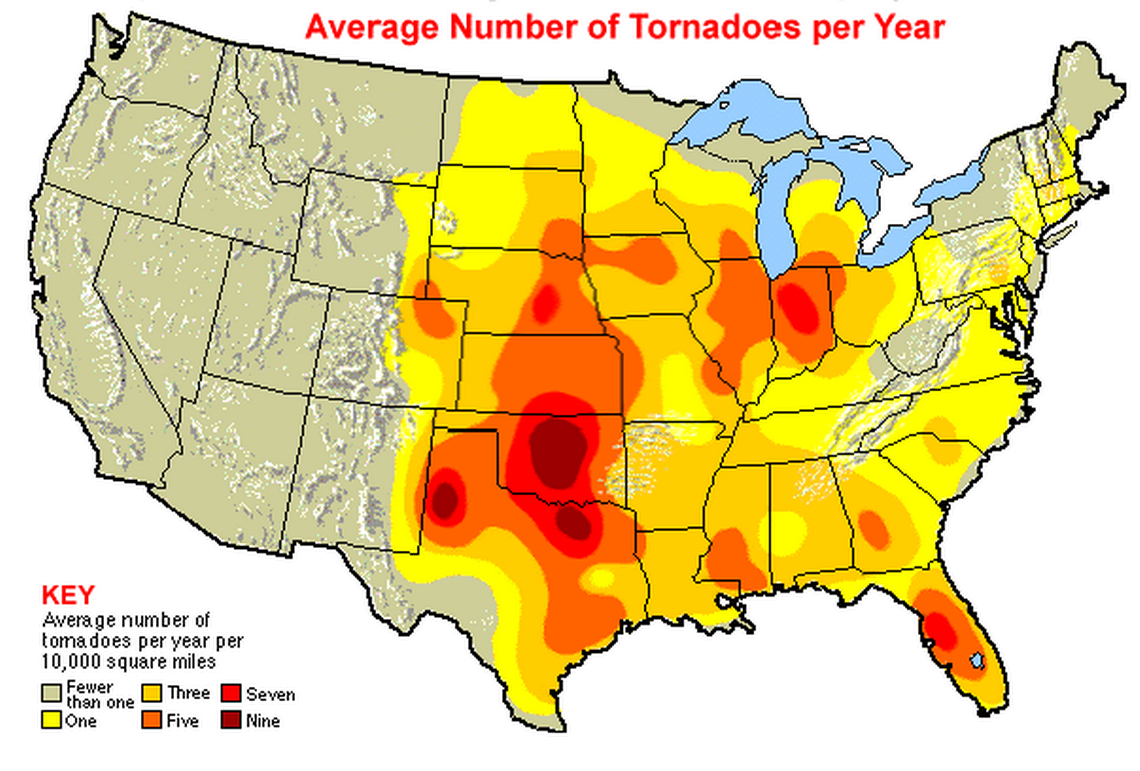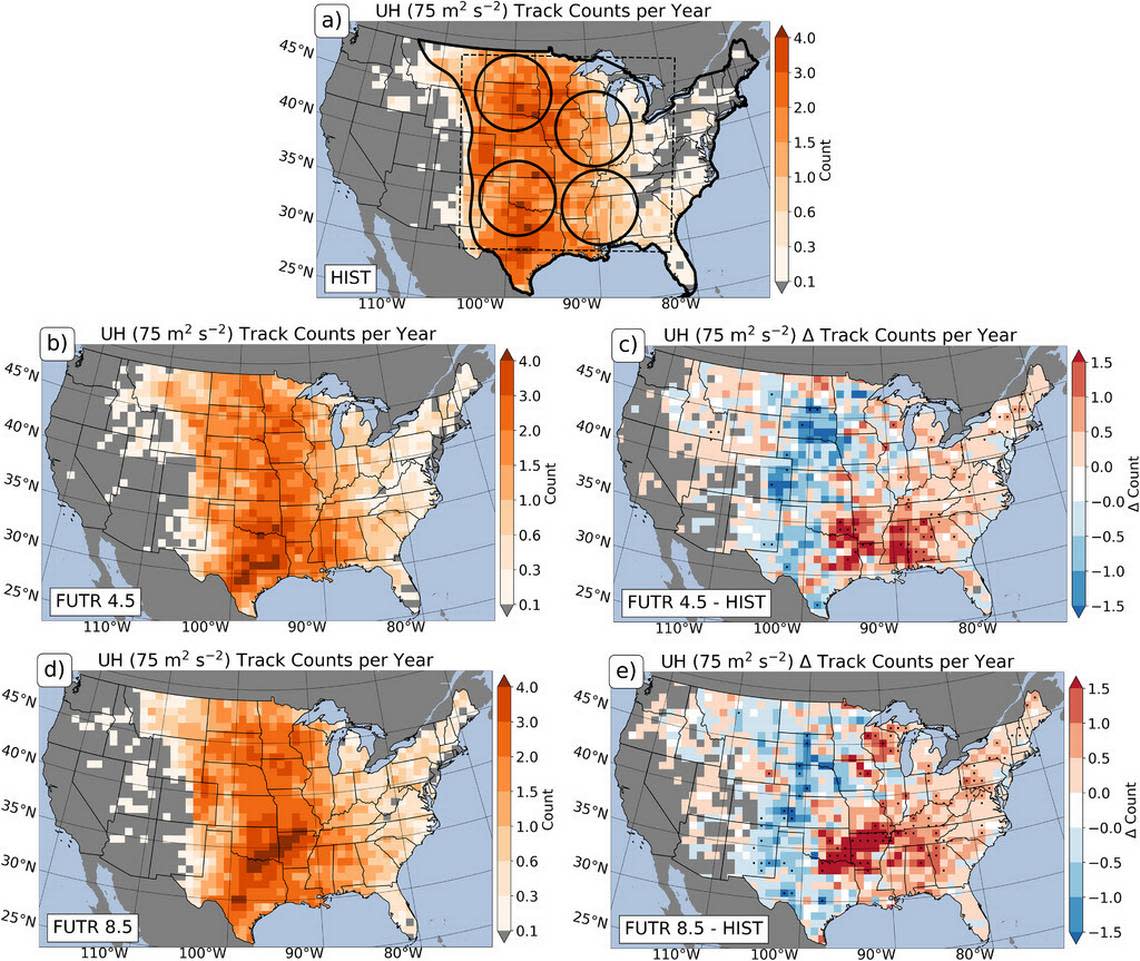Tornado Alley’s eastward shift could mean more tornadoes in North Texas. Here’s why
Tornado Alley, a cluster of states in the central U.S. where tornadoes are most likely to occur, is shifting eastward, according to recent research from Northern Illinois University.
Typically, most tornadoes are found in the Great Plains because it’s an ideal environment for the formation of severe thunderstorms. States included in Tornado Alley are Texas, Oklahoma, Kansas, Nebraska, South Dakota, Indiana, Missouri, Iowa, Illinois, Ohio and Florida. Texas and Oklahoma have historically had the most tornadoes per year per 10,000 square miles, according to the University Corporation for Atmospheric Research.
Just a little over two weeks ago, two EF-1 tornadoes hit northern Parker County with winds reaching 100 mph, the National Weather Service confirmed. One hit Whitt, about 50 miles northwest of Fort Worth, and the other started west of Poolville and traveled about five miles, where it ended near Texas 199 at the Wise and Parker County border. Two injuries were reported in Whitt and three more near Poolville.
Weather data collected for nearly a century and a half shows that the months of April and May are the most dangerous in North Texas when it comes to tornadoes. In 2022, Texas saw a total of 160 tornadoes, with 49 recorded in North Texas. But April and May hold the most tornadic activity for North Texas since 1880, with over 1,000 twisters confirmed between the two months.

Why do so many tornadoes form in south central North America?
That’s because “the area experiences very unstable atmospheric conditions that can lead to the development of supercell thunderstorms.” A supercell, an intense long-lasting thunderstorm with a rotating updraft, is responsible for most damaging hail and deadly tornadoes. It causes billions of dollars in losses and hundreds of casualties annually.
In Tornado Alley, storms occur when dry, cold air moving south from Canada meets warm, moist air traveling north from the Gulf of Mexico, per the University Corporation for Atmospheric Research. Most tornadoes happen in the spring and summer along with thunderstorms, with May and June being the peak months for tornadoes.
“Supercells are projected to become more numerous in regions of the eastern United States, while decreasing in frequency in portions of the Great Plains,” Northern Illinois University researchers write in the January study.
How will the eastward shift affect North Texas?
Tornadoes are expected to increase east of the 95th Meridian in the Ozarks, mid-South and Tennessee valley, the research says. The biggest change was found in North Texas and the Ark-La-Tex and Ozark Plateau regions, with broad increases found elsewhere in the mid-South and western Great Lakes.
Author Walker Ashley told the Star-Telegram that the data suggests an increase in the number of supercells occurring in the 21st century for the Metroplex — with the Dallas-Fort Worth area sitting on the edge between the regions of increased and decreased activity.
“You are on the gradient between the haves and the have nots,” Ashley said.
The increases are driven by more supercells occurring in the spring and winter, according to the study.
Inversely, a decrease in supercells across broad swaths of the Great Plains from South Texas to South Dakota will lessen the threat of tornadoes and hail, but may also reduce rainfall in a region with water-dependent agriculture as its economic foundation, according to the study. A notable reduction was found from the High Plains of Colorado through the middle Missouri valley. These changes are caused by reduced supercells across the central U.S. during the summer.

Researchers used climate simulations across 15 year periods in the 21st century to assess supercell change across the U.S. They explored how late 20th century supercells compare with their late 21st century counterparts for two climate change trajectories.
More frequent severe storms mean increased risk of tornadoes
Results also revealed that supercells will be more frequent and intense in the future. And tornado risk is projected to escalate outside of the traditional severe storm season, with supercells likely to increase in late winter and early spring, while decreasing midsummer through early fall.
The grim bottom line: “These results suggest the potential for more significant tornadoes, hail, and extreme rainfall that, when combined with an increasingly vulnerable society, may produce disastrous consequences.”
